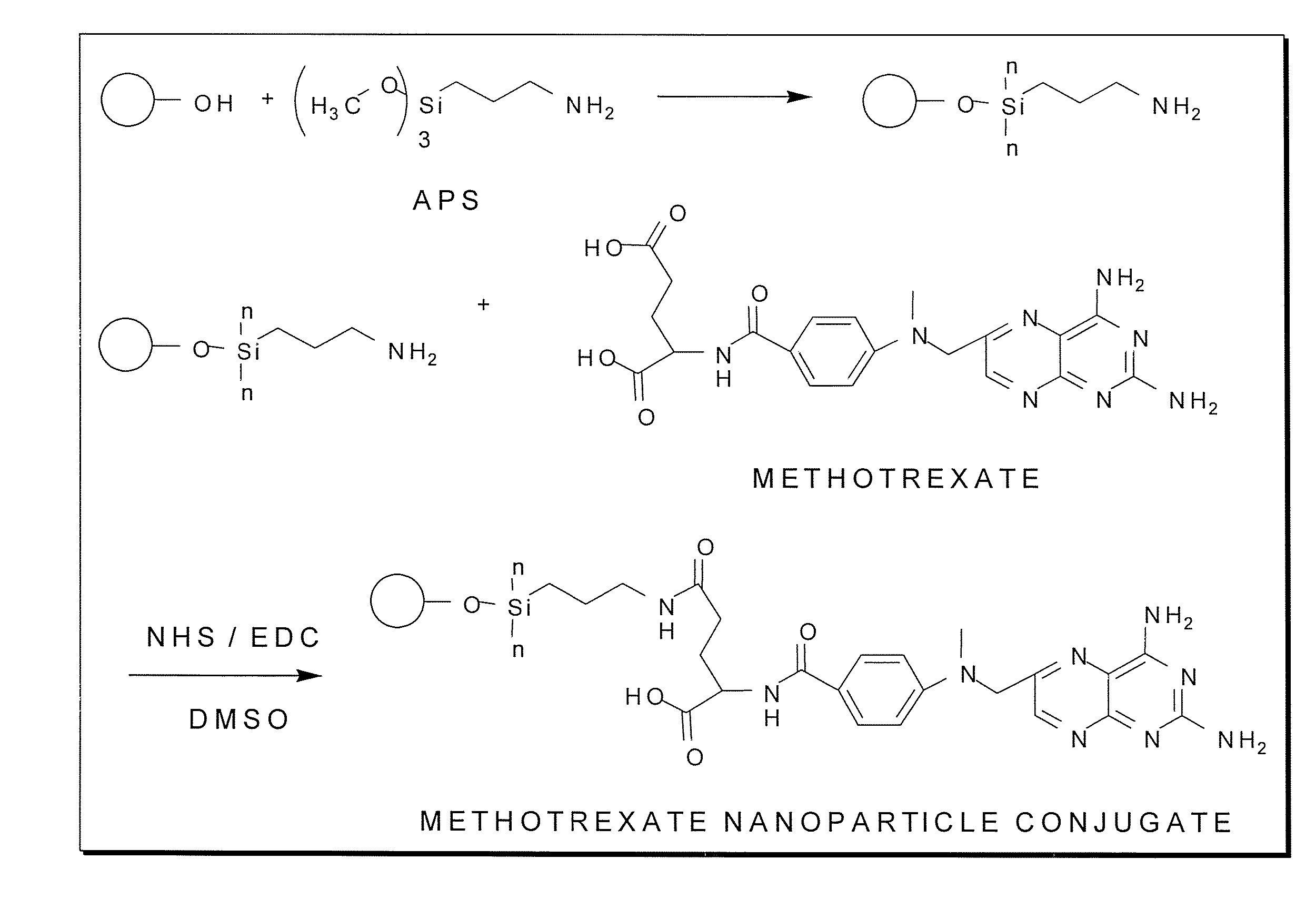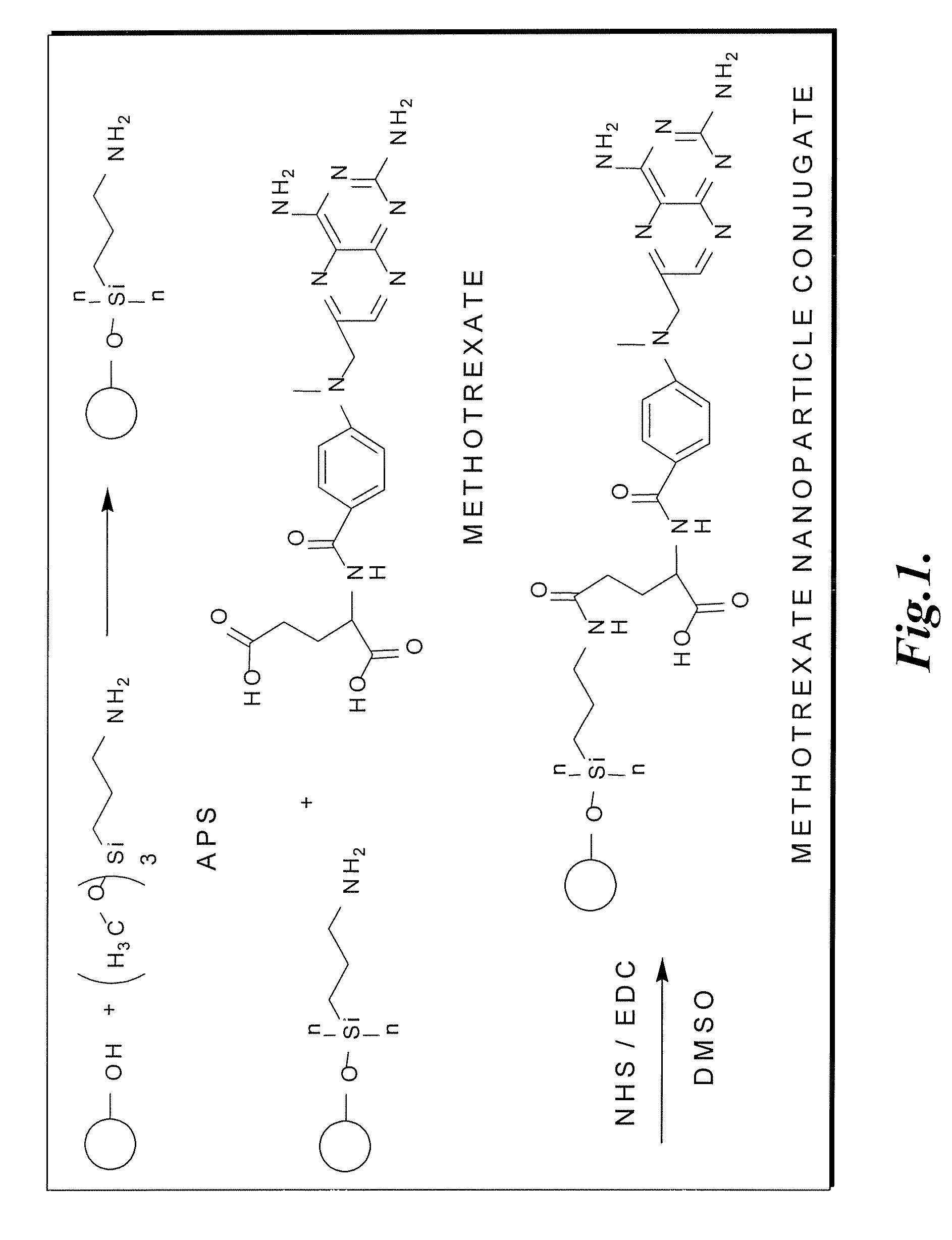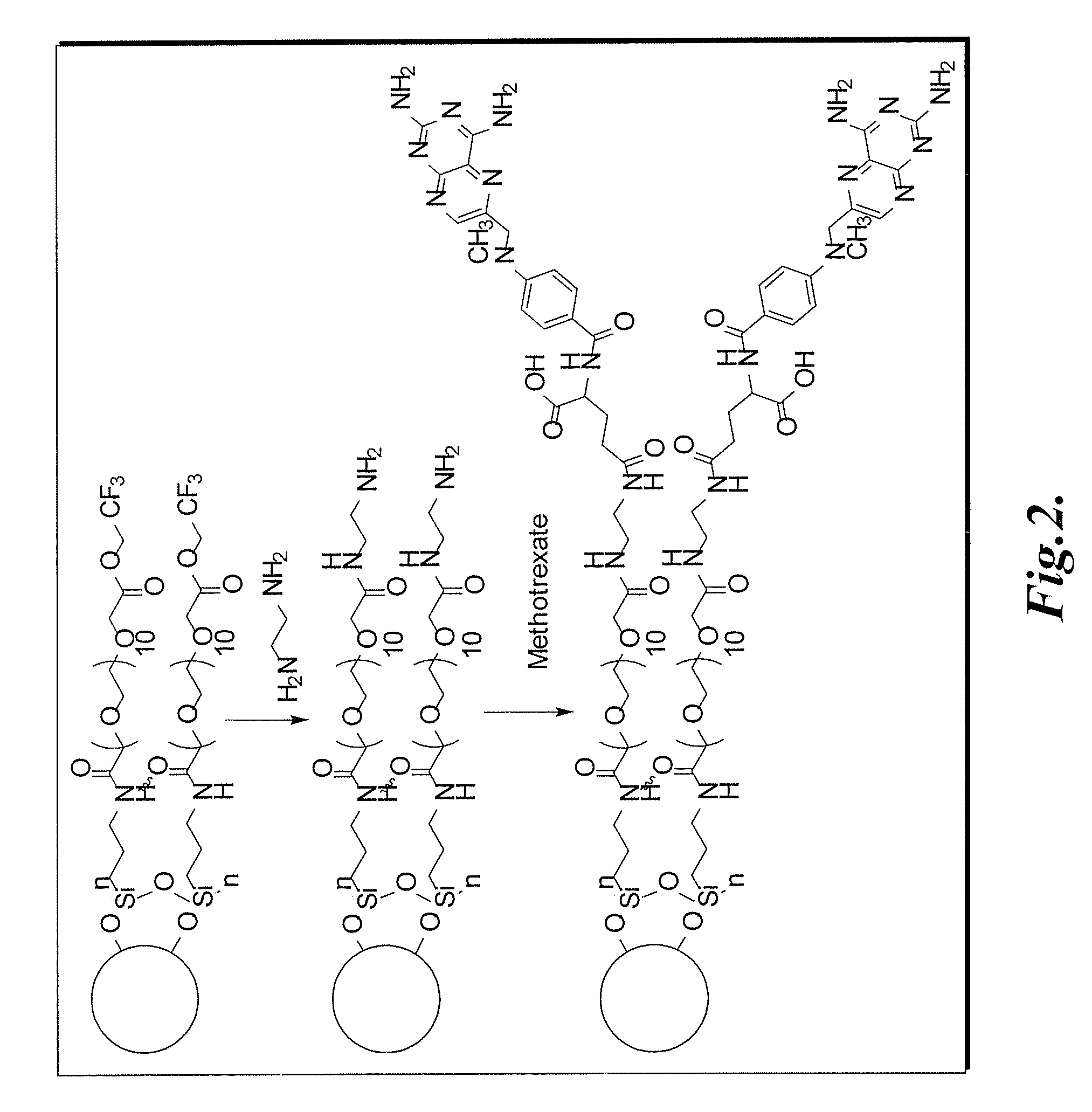Methotrexate-modified nanoparticles and related methods
a technology of metastatic nanoparticles and nanoparticles, which is applied in the field of metastatic nanoparticles, can solve the problems of insufficient delivery of chemotherapeutic agents to target cells, limited resolution of instruments, and ineffective gd) complex contrast agents, and achieve the effect of inhibiting the invasive activity of neoplastic cells
- Summary
- Abstract
- Description
- Claims
- Application Information
AI Technical Summary
Benefits of technology
Problems solved by technology
Method used
Image
Examples
example 1
Synthesis of Methotrexate-Modified Nanoparticles with Alkyl Linker
[0133] Surface modification of nanoparticles with 3-aminopropyl trimethoxysilane and methotrexate. Magnetite nanoparticles were synthesized by a co-precipitation method with minor modifications outlined previously (Chang, Y.; Kohler, N.; Zhang, M., Surface Modification of Superparamagnetic Magnetite Nanoparticles and Their Intracellular Uptake, Biomaterials 2002, 23, 1553-1561). The magnetite nanoparticles were surface-modified with methotrexate via a chemical scheme outlined in FIG. 1. The nanoparticles were first surface-modified with 3-aminopropyltrimethoxysilane (APS) to form a self-assembled monolayer (SAM) and subsequently conjugated with methotrexate through amidation between the carboxylic acid end group on methotrexate and the amine groups on the particle surface. The methotrexate conjugation reaction may occur through either the a or B carboxylic acid groups on the glutamic acid residue. One milliliter of A...
example 2
Synthesis of Methotrexate-Modified Nanoparticles with PEG Linker
[0135] Dulbecco's phosphate buffered saline (PBS), N-Hydroxysuccinimide 97% (NHS), 1-Ethyl-3-(3-dimethylamino-propyl) carbodiimide (EDAC), iron (II) and iron (III) chloride were purchased from Sigma (St. Louis, Mo.). All other solvents were purchased from Fisher Scientific (Hampton, N.H.) or Aldrich (Milwaukee, Wis.).
[0136] Magnetite nanoparticles were synthesized by a co-precipitation method. The acidic iron chloride solution was prepared by dissolution of 3.09 g (24.37 mM) of FeCl3 and 5.2 g (32.06 mM) of FeCl2 in 100 mL of 0.96 M hydrochloric acid solution. The resultant solution was placed in a sonicating bath and stirred for five hours during which time 500 mL of 1.5M NaOH solution was introduced drop-wise via a peristaltic pump. Particle synthesis temperature was controlled by an external water-circulator connected to the sonicating bath containing a solution of 50% ethylene glycol and 50% DI water. To prevent n...
example 3
Analysis of Methotrexate Release from Magnetite Nanoparticles
[0140] To simulate intracellular lysosomal conditions, methotrexate modified nanoparticles, NP-propyl-methotrexate, at a concentration of 0.1 mg / mL were suspended in a solution of 0.1 mg / mL crude protease from bovine pancreas (Sigma) in 5 mL of phosphate-buffered saline (PBS) solution at 37° C. under constant stirring. The solution pH was adjusted by the titration of 1.0M HCl and 1.0 M NaOH to achieve pH's of 2, 3, 4, 5.6, and 7.44 respectively. Following incubation for 8, 24, 48, and 72 hours, the nanoparticle suspensions were centrifuged at 2000 rpm to isolate the particles from methotrexate, PBS, and protease solutions. Methotrexate cleavage from nanoparticles was then quantified with UV spectroscopy at wavelength of 304 nm.
PUM
| Property | Measurement | Unit |
|---|---|---|
| Diameter | aaaaa | aaaaa |
| Diameter | aaaaa | aaaaa |
| Diameter | aaaaa | aaaaa |
Abstract
Description
Claims
Application Information
 Login to View More
Login to View More - R&D
- Intellectual Property
- Life Sciences
- Materials
- Tech Scout
- Unparalleled Data Quality
- Higher Quality Content
- 60% Fewer Hallucinations
Browse by: Latest US Patents, China's latest patents, Technical Efficacy Thesaurus, Application Domain, Technology Topic, Popular Technical Reports.
© 2025 PatSnap. All rights reserved.Legal|Privacy policy|Modern Slavery Act Transparency Statement|Sitemap|About US| Contact US: help@patsnap.com



